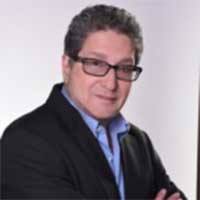Disappeared by totalitarianism

By: Pedro Corzo - 21/05/2025
Guest columnist.Share:
It is often believed that ideological dictatorships do not commit extrajudicial crimes, much less do they practice the disappearance of those who oppose them, not because they are more tolerant than uniformed despotism, but because by controlling state institutions they have the ability to legitimize their crimes, no matter how horrible they may be.
However, the Castro totalitarian system has practiced the disappearance of its enemies like any military dictatorship the hemisphere has suffered, which motivated the Cuban Institute of Historical Memory against Totalitarianism, under the coordination of Jose Luis Fernandez, to organize the conference The Disappeared of Castroism a few years ago and subsequently Dr. Daniel Pedreira, after arduous research, produced a key work to understand the extremes to which the totalitarian regime has gone in order to seize and retain power.
In Cuba since 1959. The Disappeared of Castroism, Pedreira demonstrates that, on the island, although there are laws that contemplate the death penalty, applied thousands of times during these 66 years of tyranny, there are many who have disappeared due to the insanity of the regime's henchmen and the evil of its leaders.
The most notorious case among the disappeared is that of Andrew de Graux Villafaña, whose sister Mary has been demanding information about her brother from the Cuban totalitarian dictatorship for decades.
Andy, a U.S. citizen through his father, joined the Escambray guerrillas to fight against Castroism when he was 18. The young guerrilla was wounded on the Limones Cantero farm during a confrontation with the militias on September 13, 1962. He was shot twice; one of the bullets entered his shoulder and ended up lodging in the fifth vertebra, leaving him immobile.
Captured, he was taken to the hospital in Trinidad, his hometown. He knew the doctor and asked him to notify his mother, but another doctor, Cuco Lara, more of a repressor than a healer, ordered the wounded man removed from the ward and placed in an isolated room. Consequently, when his parents arrived at the sanatorium, they were unable to see him.
He received no medical attention. After being physically and psychologically tortured, he was transferred by order of State Security to the Cienfuegos hospital.
Meanwhile, Andy's mother visited the Swiss delegation in Havana, representing the United States in Cuba, but her efforts proved fruitless.
Mary recalls, in an interview with Pedreira, that at that time her brother had already been operated on by Dr. Rodríguez Marcoleta, although the family was completely unaware of what had happened and still did not know where their loved one was.
On September 18, doctor Rodríguez Marcoleta went to see Andy. He couldn't find him. He asked for the patient who had been operated on and was told he was dead. At the morgue, he asked to see the body, but it was nowhere to be seen. Days later, State Security asked the doctor to sign Graux Villafaña's death certificate, which the doctor flatly refused to do.
Mary de Louise de Graux Villafaña, who has continued her search for her brother, expresses concern for other missing young people who took up arms against the dictatorship. The Pedrozo brothers and the Becerra brothers, who had also been guerrillas against totalitarianism, are also missing.
Also missing are Orlando Collazo and Lázaro Fernández. They are presumed to have died in combat. Fernández's remains, according to some reports, were displayed in the park in the town of Guao, but his relatives never saw his body. Nor were they informed of his death.
Several years ago, Ms. Yolanda Ibáñez filed a complaint with the Cuban Committee for Human Rights in Havana regarding the disappearance of her father, farmer Carlos M. Ibáñez, who, according to authorities, had been arrested and summarily executed in 1965. The Ibáñez family has never seen their loved one's body, nor has it ever been able to determine where he was buried.
This is a situation suffered by thousands of Cuban families. They assume their relatives were buried or killed in combat, but they never had the opportunity to hold a wake or bury them. Even worse, they don't know where their relatives' remains are.
The remains of more than 70 people shot and buried in a mass grave in Loma de San Juan, Oriente, on January 12, 1959, on the orders of Raúl Castro, have disappeared from their burial site, according to a complaint filed by former political prisoner Ramiro Gómez Barruecos.
According to investigations by Jose Luis Fernández, guerrillas Juan Antonio Benítez, Gabriel Morales, and Onelio Pérez were killed by the militia on the San Gabriel farm in Las Villas. However, this is a hypothesis, as no one has attested to seeing the bodies or claiming to know where they are buried.
Alberto Álvarez Bravo has publicly denounced the disappearance of Alberto Sigas, supported by the testimonies of his wife, Carmen Núñez Armesto, and his mother, Elia Echevarría.
Little has been written about those disappeared by Cuban totalitarianism, and even in this respect, the control of information established by the dictatorship has been useful, a control that our author Daniel Pedreira has broken forever.
«The opinions published herein are the sole responsibility of its author».